Excerpts from Jim Conrad's
Naturalist Newsletter
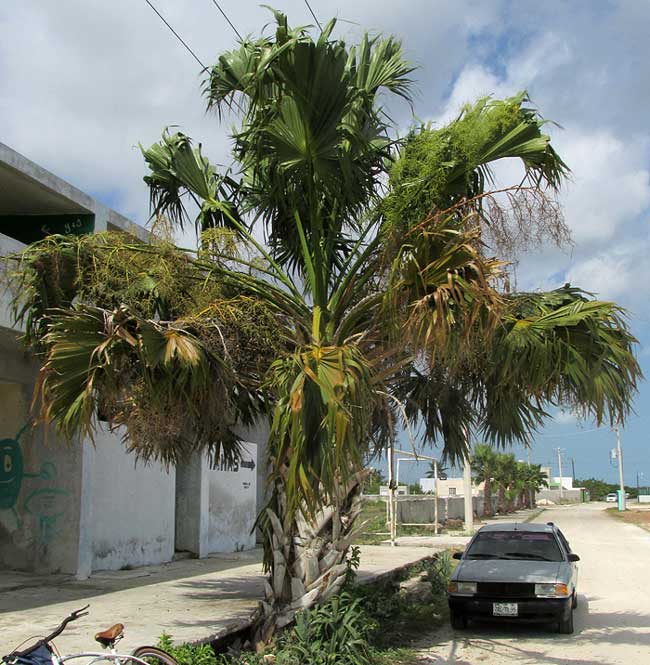
from the April 5, 2015 Newsletter issued from Río Lagartos, on the Yucatan Peninsula's northern coast (~N21.60°, ~W88.16°), Yucatán state, MÉXICO
MEXICAN PALMETTO
On the south side of Rió Lagartos in front of the fútbol stadium, a lone fan-palm gyrates in hot, dusty, mid-dry-season wind, as shown above. In that picture it's worth noting the grasslike leaves at the palm's base, for they're young palms that eventually will be mowed down. Seeds from this palm germinate en mass below the tree, so the tree must feel somewhat at home even in this concrete-and-asphalt environment. And it should feel at home, for this is the Mexican Palmetto, SABAL MEXICANA we've looked at growing in the wild not far from here at www.backyardnature.net/mexnat/sabal.htm.
Still, Mexican Palmetto is planted as an ornamental in warmer countries worldwide, so it's worth looking at here as a street tree.
Among features characterizing Mexican Palmettos are the way the fronds' petioles extend into the frond blade, gradually diminishing and causing the blade to twist in a certain way -- such fronds are said to be "costapalmate"-- as shown below:
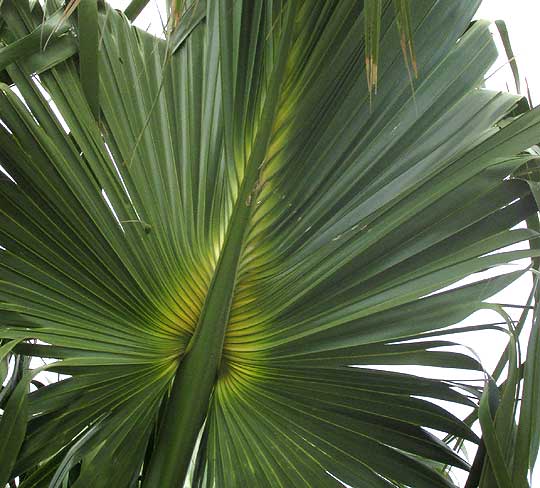
The fronds' broad-based petioles split where they attach to the trunk, as seen below:
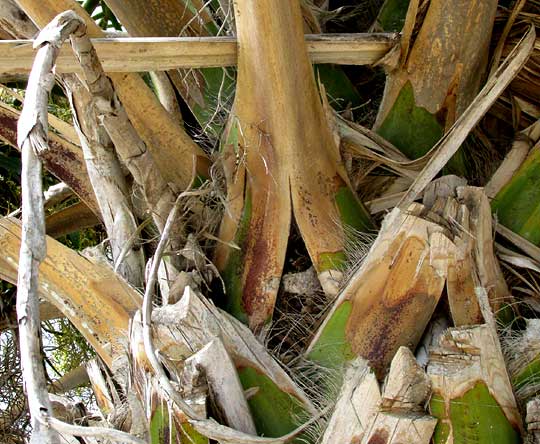
This tree bore several large, much-branching, fruiting clusters, as shown below:
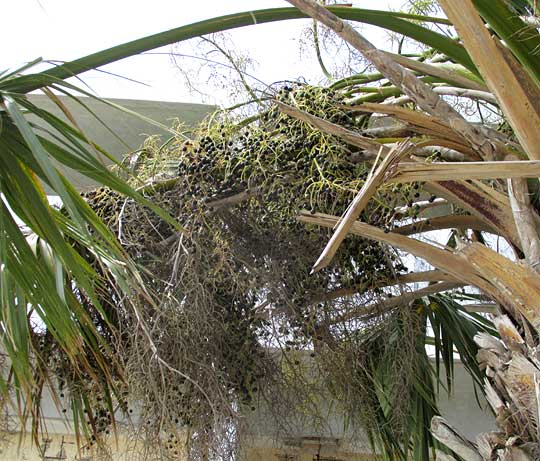
The pea-sized fruits were blackish, but when the leathery covering was peeled off, a chestnut-colored seed was revealed, shown below:
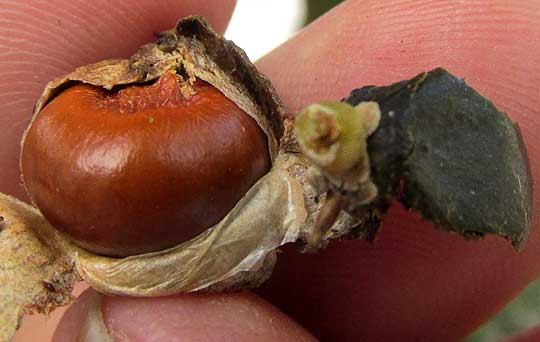
Mexican Palmettos aren't commonly planted around town. Maybe they are regarded as too familiar to be desirable, despite the fact that people the world over like to plant them just because they're so handsome and easy to grow.